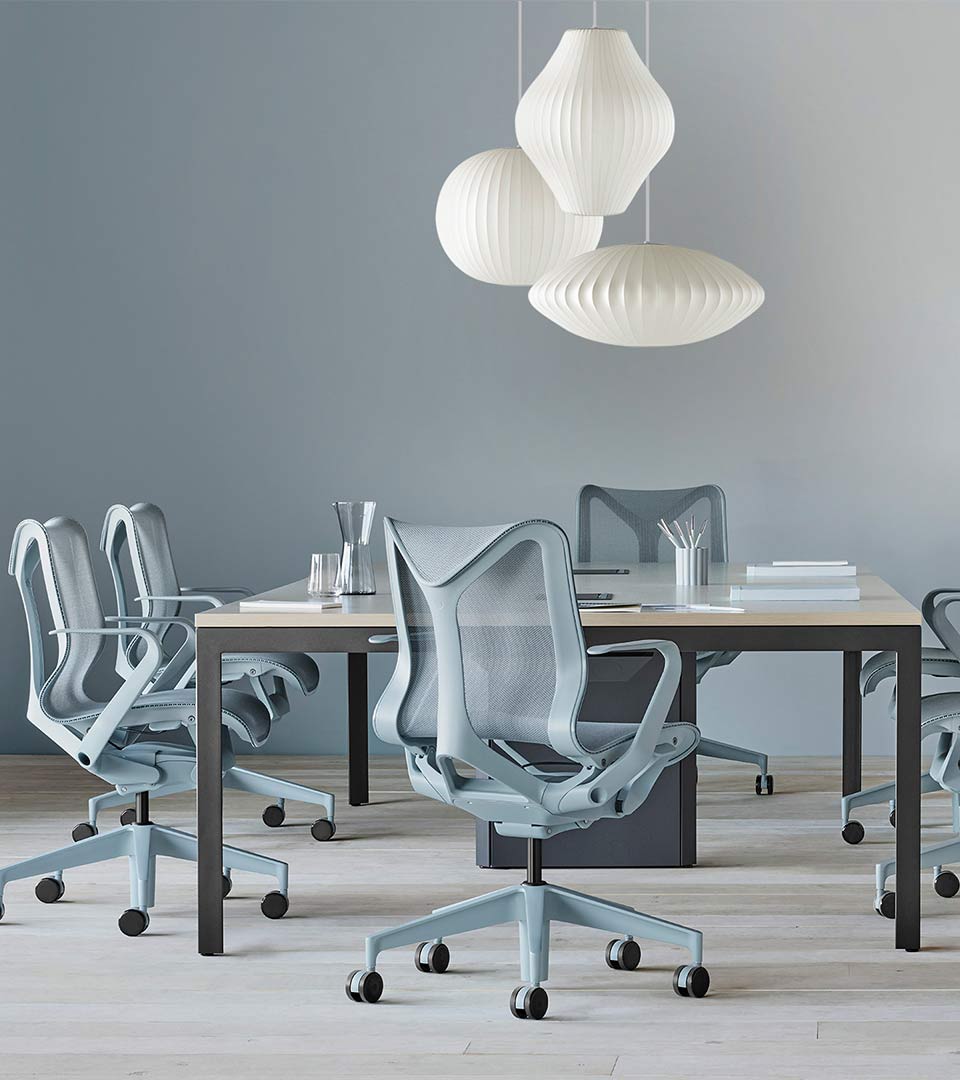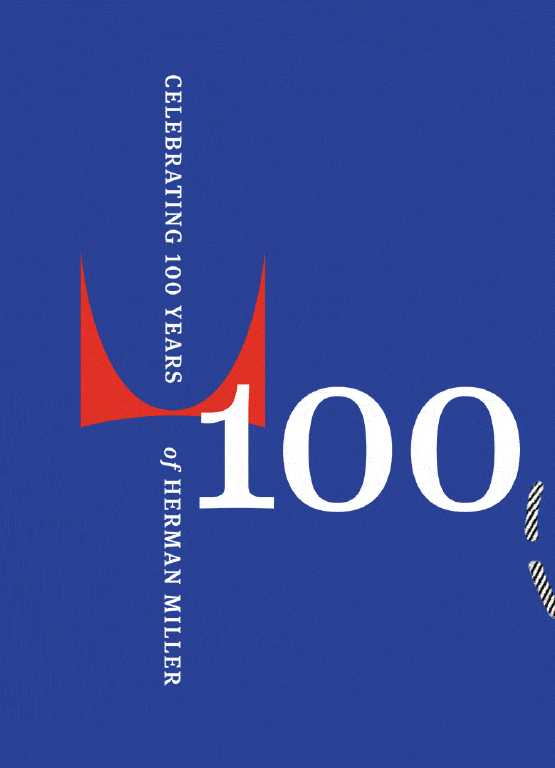As this renowned company celebrates the 100th anniversary of its brand name, it is a moment to reflect on the profound impact it has had on the industry, from its ground-breaking designs to its commitment to sustainability and human-centred approach.
This year we recognise 100 years of Herman Miller. As the renowned company celebrates the 100th anniversary of its brand name, it is a moment to reflect on the profound impact it has had on the industry, from its ground-breaking designs to its commitment to sustainability and human-centered approach. Herman Miller's century-long journey is not only a testament to its enduring success, but also a testament to the power of thoughtful design and a deep understanding of human needs.
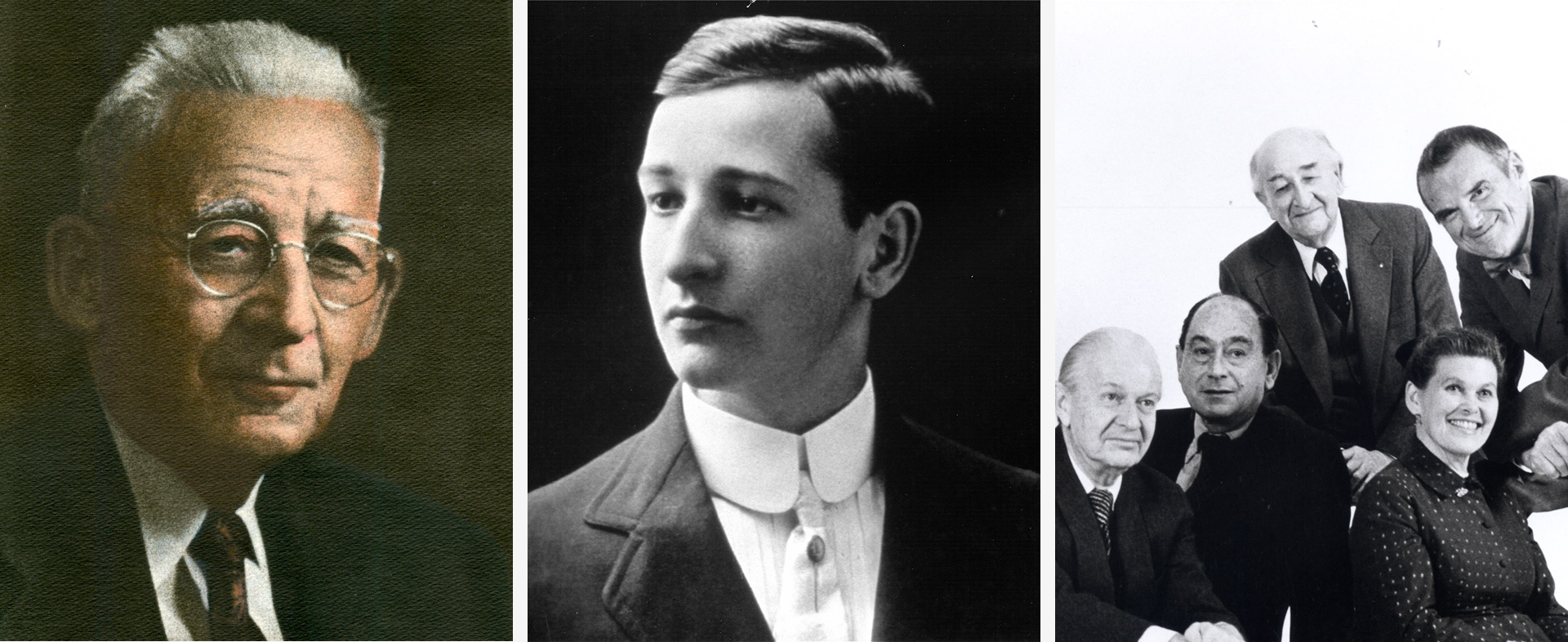
Pictured: Herman Miller, D.J. De Pree's father in-law | Founder D.J. De Pree | Alexander Girard, George Nelson, Founder D.J. De Pree and Ray and Charles Eames.
In 1923, the Michigan Star Furniture Company became what we now know as Herman Miller, when D.J. De Pree and his father-in-law (company namesake Herman Miller) purchased the company. De Pree renamed the company after Miller, who was a well-regarded businessman in the community. Herman Miller quickly gained recognition for its commitment to quality craftsmanship and innovative design. One of the company's early breakthroughs was the introduction of modernist furniture, inspired by the principles of the Bauhaus movement. Collaborations with several influential designers helped establish Herman Miller as a pioneer of contemporary design.
By the middle of the 20th century, the name Herman Miller had become synonymous with “modern” furniture. De Pree first hired designer Gilbert Rohde in 1930, who ushered in an era of problem-solving modern design. Later, he would hire George Nelson, who changed the course of the entire company. Design-driven – and with support from De Pree – Nelson brought in his contemporaries, such as Charles and Ray Eames, Alexander Girard, and Isamu Noguchi, to produce pieces that would become modern classics.
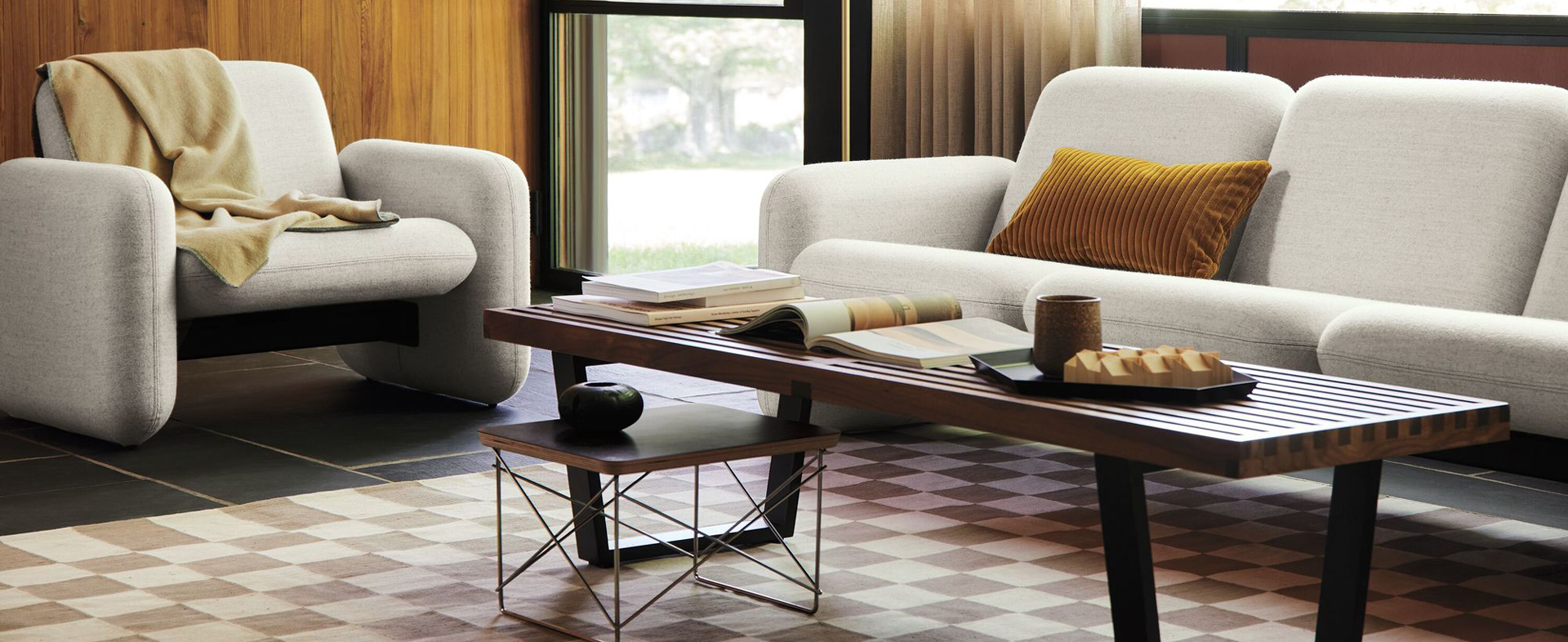
In the 1940s, 1950s, and 1960s, Herman Miller reached new heights with iconic creations that became staples of mid-century modern design. In the 1940s, the Executive Office Group, designed by Gilbert Rohde, signalled Herman Miller's entry into the office-furniture market. The Nelson platform bench was introduced. The Eames moulded plywood chair, moulded plywood lounge chair, moulded plywood folding screen and moulded plywood coffee table were introduced. In the 1950s, many design icons born. The world's first moulded fibreglass chairs, designed by Charles and Ray Eames, were debuted. Eames storage units and wire base tables were introduced. Nelson bubble lamps were also first introduced.
Designers Charles and Ray Eames established their long and legendary relationship with Herman Miller in 1946 with their boldly original moulded plywood chairs. The aesthetic integrity, enduring charm and comfort of the chairs earned them recognition from Time magazine as The Best Design of the 20th Century. Experimenting with wood-moulding techniques brought about the Eames Lounge Chair and Ottoman, designed in 1956. Exemplifying Herman Miller’s approach to blending form and function. This timeless piece has become an enduring symbol of elegance and comfort, coveted by design enthusiasts and collectors alike.
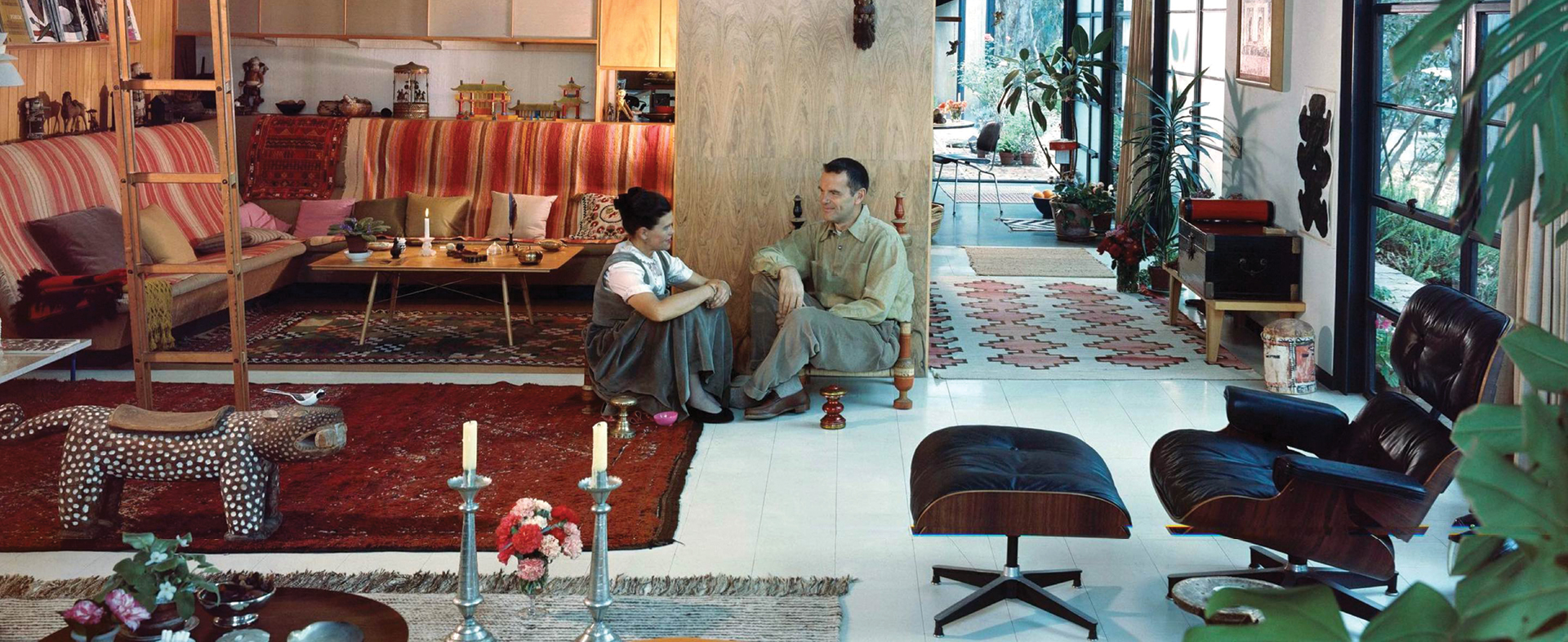
In the 1960s, with nearly 150 dealers, Herman Miller has expanded its presence to Central and South America, Australia, Canada, Europe, Africa, the Near East, Scandinavia and Japan. This is also when Herman Miller introduces the Action Office system, the world's first open-plan modular system of panels and attaching components. Designed by Robert Propst, AO, as it will come to be called, will revolutionise office design and spawn a whole new industry. Finally in the final year of the 1960s, longstanding chairman of the board D.J. De Pree steped down, passing the role to his son Hugh De Pree.
In the grand tapestry of the business world, there are few companies that can boast a legacy as remarkable and transformative as Herman Miller. As we have reflected upon the first 50 years of this iconic brand, it is abundantly clear that their journey has been one of relentless innovation, unwavering commitment to excellence, and a profound understanding of the power of design.
Follow along for part two covering the following 50 years of Herman Miller.

